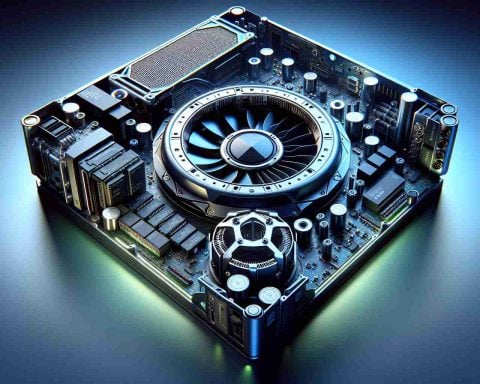- The electric vehicle (EV) revolution is accompanied by the major challenge of recycling large, heavy battery packs.
- Traditional recycling faced hazards like thermal runaways from disassembly.
- Innovative systems now allow batteries to be shredded without disassembly or discharge.
- The process involves immersing batteries in water and nitrogen, preventing fires.
- LithiBatt pioneers a system using watertight shredders in nitrogen-rich airlocks for safe processing.
- The approach transforms batteries into usable metals, promoting recycling efficiency.
- This technological advance improves safety and efficiency for EV manufacturers and recyclers.
- The new recycling process heralds a sustainable future for energy renewal and resource reutilization.
The electric vehicle revolution races forward, and with it comes the towering challenge of recycling immense battery packs that power these machines. Picture battery packs as large as a king-size mattress, weighing close to a ton, and packed with over a thousand cells—massive blocks of energy and rare metals bound tightly. Historically, these giants of technology plagued recyclers, who scrambled to disassemble them without triggering hazardous thermal runaways. A hint of heat, a punctured cell, and suddenly, an inextinguishable blaze.
Enter the innovative systems that change the game, boasting the power to shred these monolithic packs without disassembly or discharge. Visualize a seamless dance as these systems become the vital “front end” of recycling processes. Crafted by pioneers at LithiBatt, a potent mixture of water and nitrogen cocoons the batteries. The water nurtures a calm energy state, while nitrogen suffocates potential fires, snuffing them before they even spark.
The magic lies in their meticulous design—a world of watertight shredders immersed entirely in liquid, wrapped in nitrogen-rich airlocks. Packages of ferrous metals, lithium, cobalt, and more transform from chaos into composure, ready for refined use. Greedy for resolution, the system’s three-stage shredding metamorphoses these once-intimidating powerhouses into manageable material, ready to serve new purposes.
This shift in recycling technology signals a pivotal transformation. EV manufacturers and recyclers find safety and efficiency in the grasp of these groundbreaking systems. As we edge closer to a sustainable future, the mastery over recycling these mighty battery packs becomes not just a triumph over technical hurdles, but a beacon of ingenuity steering us into an era of energy renewal. The power of recycling, unshackled, now lies in the rhythm of these relentless shredders.
This Revolutionary Breakthrough in EV Battery Recycling is Changing the Future of Sustainability
How Does This New Recycling Technology Work?
The innovative technology designed by LithiBatt for recycling electric vehicle (EV) batteries introduces a unique process that does not require disassembly or discharge. By immersing the entire battery pack in a water and nitrogen environment, the system ensures safety and efficiency. The water element helps stabilize the energy within the battery cells, while the nitrogen acts as a suppressant to prevent any potential fire hazards during shredding.
Key Features and Specifications
1. Watertight Shredders: The shredders used in this technology are completely immersed in liquid, which increases safety by reducing fire risks.
2. Nitrogen-Rich Airlocks: These airlocks effectively prevent oxygen from reaching the shredded materials, cutting off any chances of combustion.
3. Three-Stage Shredding Process: This step-by-step reduction process transforms the large battery packs into small, manageable materials without losing valuable metals like lithium and cobalt.
Innovations in EV Battery Recycling
– Safety First: The most significant innovation here is the capacity to process battery packs safely, reducing the risks associated with thermal runaways.
– Material Recovery: With an emphasis on efficiency, this method improves the recovery rates for precious and rare metals essential for new battery production.
Pros and Cons
Pros:
– Enhanced Safety: The method significantly lowers the risk of fires during the recycling process.
– Efficient Material Recovery: High recovery rates for valuable metals, which can reduce the cost and environmental impact of mining.
– No Disassembly Required: Reduces labor costs and speeds up the recycling process.
Cons:
– Initial Setup Costs: Implementing such advanced systems may require high initial capital investment from recyclers.
– Specialized Infrastructure: Needs the infrastructure to support this kind of technology, which might not be readily available everywhere.
Environmental and Market Implications
With the global push towards sustainability, EV battery recycling is essential for reducing reliance on non-renewable resources and minimizing environmental impact. LithiBatt’s technology provides a way to decrease the carbon footprint of EVs by enabling the reuse of scarce metals.
Market Forecast and Trends
As the demand for electric vehicles increases, the market for recycling EV batteries is expected to grow rapidly. By adopting new technologies like those introduced by LithiBatt, companies can position themselves competitively in this emerging sector.
Addressing Controversies and Concerns
Some industry skeptics point out the potential challenges related to scaling up such technologies across different regions and infrastructures. Additionally, questions around long-term reliability and large-scale implementation costs pose hurdles that must be addressed.
Future Predictions
As innovations continue to emerge, the battery recycling industry is expected to become more efficient, helping close the loop on electronics manufacturing. This can lead to a significant reduction in electronic waste and further advances in clean energy production.
Useful Links for Further Exploration
– To explore more about electric vehicles and related innovations, visit the [Tesla](https://www.tesla.com) website.
– For insights into sustainable technology practices, check out [GreenBiz](https://www.greenbiz.com).
– Learn about battery recycling advancements at [Battery University](https://batteryuniversity.com).
In conclusion, technologies like the one developed by LithiBatt highlight the transformative power of innovation in tackling environmental challenges. As the world transitions towards renewable energy, such developments are crucial in ensuring a sustainable and greener future.














